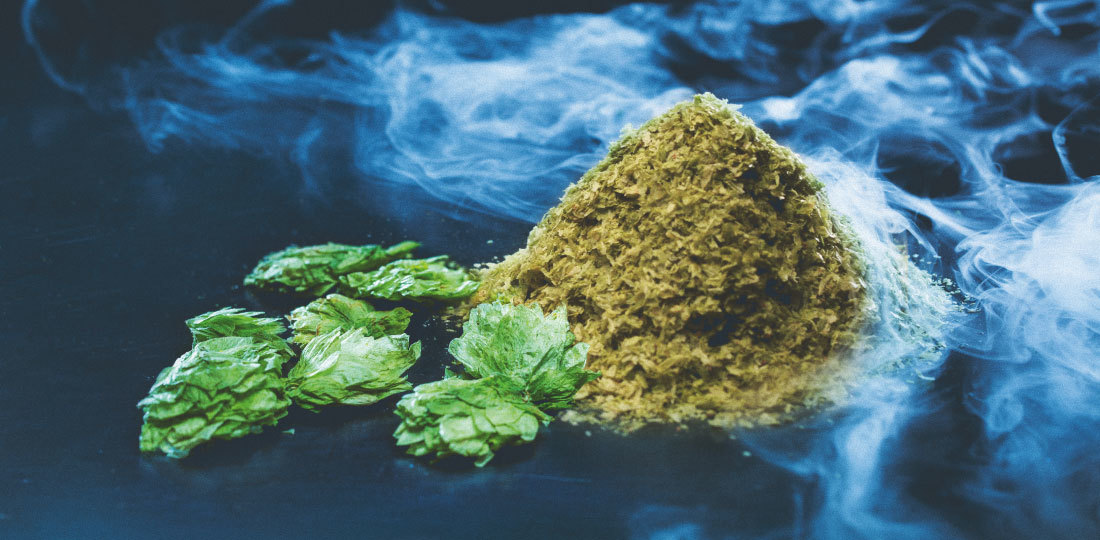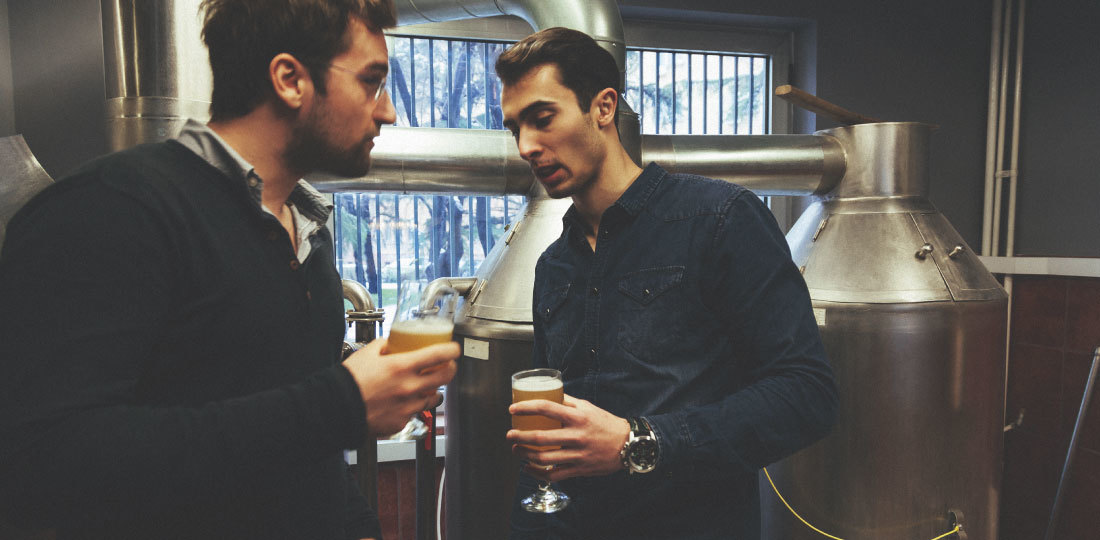The American Craft Story

The Story
The story of American Beer could have very easily been a thoroughly dreary footnote on the history of world beer. In 1978 there were only 89 breweries in the entirety of the USA, and these were owned by 42 different companies.
Consumers had effectively no diversity of choice on grocery store shelves and were largely subjected to a monoculture of lite lagers. The key moment in the turnaround of American beer was the small piece of legislation, H.R 1337, signed into law by Jimmy Carter on October 14th 1978 which made an allowance for a small quantity of beer and wine to be produced at home, to be exempt from tax, this essentially legalised homebrewing. Alongside this homebrew revolution the beginnings of the craft brewing movement were starting to emerge. Fritz Maytag had just bought the failing Anchor brewery in 1969 and through the redevelopment of the now iconic Anchor Steam in 1971 had managed to build it into a success story. Concurrently, Jack McAuliffe founded the New Albion Brewing Company in 1976, which was the first ‘microbrewery’ of the modern era. New Albion was ultimately not set to last and closed shortly after in 1982.
However, this failure lead to the creation of the brewpub, an entirely new concept when homebrewers Michael Laybourne and Norman Franks bought the brewery equipment and established Hopland, the first premises in California (and only the second in the USA) licensed to brew and sell their own beer onsite alongside food in the same location. These early pioneers influenced now household names such as Sierra Nevada’s Ken Grossman, Lagunitas’ Tony Magee, Greg Koch of Stone Brewing and Brooklyn’s Steve Hindy.
Fast forward to today, and there are now more than 7,000 breweries in the USA (according to the Brewer’s Association 2018 figures), and there are now cities with as many breweries in them as the entire country had in 1978. Craft beer accounts for 13.2% of the total beer sales in the USA by volume, and 24% of the total by $ sales value. Although the volume of the USA beer market as a whole is in decline by 1%, Craft Beer volume is up by 4% year on year. The most astonishing statistic is that in 2018 there were 1,049 new brewery openings, an incredible figure that averages out to 3 per day.
The IPA Story
The history of the meteoric rise and success of craft beer in the USA is dominated by IPA, a style rebirthed in America borne out of disappointment and boredom with the status quo.
Craft Brewing pioneers such as Anchor Brewing’s Fritz Maytag made pilgrimages to the UK in the 1970s seeking inspiration for beer styles to rival the industrial light lagers dominating the country’s palate. However, these visits served only to increase their frustration as they found a country overwhelmed by bland cask mild, lifeless kegged bitters, and a familiar wave of industrial lager. yet, on these trips they were able to gain experience of UK brewing techniques for utilising additional sugars, the use of hopbacks between mash and whirlpool, and critically the effective use of dry hopping.




Belgian IPA
Brewers started to consider different fermentation possibilities within the style; What if they combined extremely expressive hops with yeast strains that similarly developed their own distinct aromas during fermentation? The high ester and phenol producing strains favoured by Belgian brewers were an obvious choice. A true mark of this development’s success is how it inspired big name breweries in Belgium, with Achouffe producing Houblon Chouffe, and Duvel releasing the renowned Tripel Hop series.


Black IPA
A difficult style to get to grips with, debate rages on as to whether Black IPA’s should have any roast malt character to them, or simply pull off the trick of having typical IPA aroma and flavour but being dark in colour. Brewers experimented with the use of very small percentages of dehusked roast malt in recipes built around typical IPA characteristics, preferring dank piney hop varieties to those expressing bright citrus. This dehusked malt would provide the dark wort but with far lower tannins and roast flavours than traditional roasted barley.


Bretted IPA
A thoroughly oxymoronic reaction to the ‘drink fresh’ IPA culture. Typical IPA wort fermented with funky Brettanomyces strains, more synonymous with long term aging Belgian beers. However, over time Brett can produce juicy tropical aromas. It is also argued that historically IPA would have had a strong tarter character to it due to extended aging in wooden casks that would have provided the perfect conditions for Brett to thrive in.

Innovation
Being world leaders in the Craft Beer market and having a well developed inter-brewery scientific community, the USA is a hotbed for innovation in brewing technology.
The Brewer’s Association hosts the Craft Brewers Conference each year, focused on the sharing of information and education of brewers of all sizes, from brewpubs to full scale modern facilities.
Through this culture of information sharing, American brewers have gifted the world with a number of technical and cultural innovations and techniques.


Cryo hops (LupuLN2)
This 23rd century sounding ingredient was developed by Yakima Chief Hopunion and gives brewers the ability to make beers juicier than they had ever imagined possible. Through a unique process of exposing hops to liquid nitrogen, the lupulin (the part of the hops that contains all the flavoursome resins and oils) is able to be concentrated and separated from the rest of the hop matter.
This lupulin powder lends an enormously amplified aroma and low bitterness, making it a firm favourite of juice chasing New England IPA producers. Additionally, with less organic material, the losses to trub after dry hopping are significantly lower. The leftover byproduct is turned into ‘American Noble hop’ pellets, allowing brewers to use expressive American varieties in styles normally reserved for European noble hops.

Barrel Aging
Not all innovation comes from looking to the future. Although brewers in Belgium and Germany have never been strangers to aging beer in barrels, American brewers in the 21st century have pushed forward and developed barrel aged beer into its own category. Marrying together the flavours of wood, and whatever product was in it previously, with a beer, is not as simple as adding one to the other.
Considerable effort has to be taken to maintain control over oxidation, stave off or beneficially manage bacterial infection, and pick the optimum time to take the beer off the wood. America’s enormous bourbon industry can only use casks a single time, so there is an abundance of ex-bourbon casks available. However, brewers have used all sorts of casks, such as maple syrup, tequila and wine. The list is endless.

Quick Sours
The American beer public have long been fans of well made sour beers, almost single handedly keeping Belgium’s lambic producers going through their domestic market slump in the 1990s. Inspired by these beers, but ultimately too impatient for the years long fermentations required, American brewers researched and developed alternative methods for producing sour beer relatively quickly. Kettle souring swiftly became the frontrunner of these methods due to it being reasonably easy to avoid cross contamination, and requiring little in the way of additional equipment.
These kettle sours were soon adapted and enhanced with various fruit flavours, and a new movement was born. This isn’t to say that all sour beer in the USA is produced the ‘quick way’, there are fermented sours, a number of whom have installed coolships and perform turbid mashes in a process similar to lambic brewing.

Collab Culture
As well as technological and brewing innovations, the American brewing scene has developed a social innovation too. Taking the next step forward from their information sharing culture, brewers began to invite each other into their breweries to work together on new beers.
This would result in the practical application of new techniques, exploring new ingredients, and most importantly having fun and making new friends. This culture soon spread around the world, and now there are a number of international collaboration projects.
Discover more in our culture & styles section